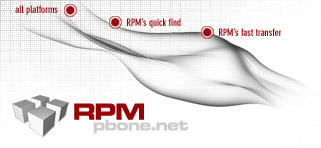| Name : perl-Data-Hierarchy
| |
| Version : 0.34
| Vendor : openSUSE
|
| Release : bp154.1.1
| Date : 2021-07-15 09:53:00
|
| Group : Development/Libraries/Perl
| Source RPM : perl-Data-Hierarchy-0.34-bp154.1.1.src.rpm
|
| Size : 0.02 MB
| |
| Packager : https://bugs_opensuse_org
| |
| Summary : Handle data in a hierarchical structure
|
Description :
the Data::Hierarchy manpage provides a simple interface for manipulating
inheritable data attached to a hierarchical environment (like a
filesystem).
One use of the Data::Hierarchy manpage is to allow an application to
annotate paths in a real filesystem in a single compact data structure.
However, the hierarchy does not actually need to correspond to an actual
filesystem.
Paths in a hierarchy are referred to in a Unix-like syntax; \'\"/\"\' is the
root \"directory\". (You can specify a different separator character than the
slash when you construct a Data::Hierarchy object.) With the exception of
the root path, paths should never contain trailing slashes. You can
associate properties, which are arbitrary name/value pairs, with any path.
(Properties cannot contain the undefined value.) By default, properties are
inherited by child paths: thus, if you store some data at \'/some/path\':
$tree->store(\'/some/path\', {color => \'red\'});
you can fetch it again at a \'/some/path/below/that\':
print $tree->get(\'/some/path/below/that\')->{\'color\'};
On the other hand, properties whose names begin with dots are uninherited,
or \"sticky\":
$tree->store(\'/some/path\', {\'.color\' => \'blue\'});
print $tree->get(\'/some/path\')->{\'.color\'}; # prints blue
print $tree->get(\'/some/path/below/that\')->{\'.color\'}; # undefined
Note that you do not need to (and in fact, cannot) explicitly add \"files\"
or \"directories\" to the hierarchy; you simply add and delete properties to
paths.
|
RPM found in directory: /packages/linux-pbone/ftp5.gwdg.de/pub/opensuse/repositories/openSUSE:/Backports:/SLE-15-SP4/step/noarch |
